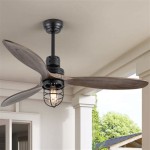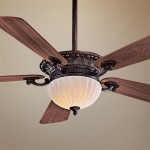Replacement Tiles For Suspended Ceiling
Suspended ceilings are a common feature in many commercial and institutional buildings. They offer a number of advantages, including the ability to conceal unsightly mechanical systems, provide sound absorption, and allow for easy access to utilities. However, over time, suspended ceiling tiles can become damaged or discolored, making them unsightly and affecting the overall appearance of the space. In these cases, it may be necessary to replace the tiles.
When replacing suspended ceiling tiles, it is important to choose the right type of tile for the application. There are a number of different types of suspended ceiling tiles available, each with its own unique set of features and benefits.
- Mineral fiber tiles are the most common type of suspended ceiling tile. They are made from a mixture of mineral fibers, such as glass wool or rock wool, and are bound together with a resin. Mineral fiber tiles are lightweight, fire-resistant, and sound-absorbing.
- Metal tiles are made from a variety of metals, including aluminum, steel, and tin. Metal tiles are durable, easy to clean, and moisture-resistant. They are often used in areas where hygiene is a concern, such as hospitals and kitchens.
- Plastic tiles are made from a variety of plastics, such as PVC and polystyrene. Plastic tiles are lightweight, inexpensive, and easy to install. They are often used in areas where cost is a concern, such as basements and garages.
- Wood tiles are made from a variety of woods, such as oak, maple, and cherry. Wood tiles are aesthetically pleasing, durable, and sound-absorbing. They are often used in areas where a natural look is desired, such as offices and libraries.
Once you have chosen the right type of suspended ceiling tile, you will need to determine the size of the tiles you need. Suspended ceiling tiles are available in a variety of sizes, but the most common size is 2 feet by 4 feet. However, you may also find tiles that are 1 foot by 4 feet, 2 feet by 2 feet, and 4 feet by 4 feet.
Once you have determined the size and type of suspended ceiling tiles you need, you can begin the installation process. The installation process is relatively simple, but it is important to follow the manufacturer's instructions carefully. In general, the installation process involves removing the old tiles, installing the new tiles, and then replacing the grid.
Replacing suspended ceiling tiles is a relatively simple and inexpensive way to update the look of your space. By following the steps outlined in this article, you can ensure that the installation process goes smoothly and that your new suspended ceiling tiles look great for years to come.

How To Replace A Drop Ceiling The Lilypad Cottage

Replacement Ceiling Tiles Grid Suspended Ceilings

Updating An Old Ceiling Ceilings Armstrong Residential

How To Easily Update An Ugly Drop Ceiling

Suspended Ceiling Systems Ceilings Armstrong Residential

Ceiling Tile Replacement By Scq Suspended Ceilings Qld

How To Replace Drop Ceiling Tiles

When Should You Replace Your Suspended Ceiling Tiles
How To Install Drop Ceilings Easy Guide Kanopi By Armstrong

Replacement Suspended Ceiling Tiles Over 180 In Stock
See Also








